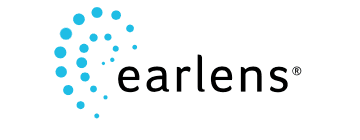As the coronavirus pandemic swept across the United States, many businesses were forced to close their doors and rely on the Internet to get noticed. Hearing care providers were no exception, and many are now continuing to look for new ways to increase foot traffic through web-based means.
Although there’s plenty of advice on how to improve your business’ online market tactics, few focus on how audiology providers can grow their practice within the context of the current needs and challenges of the hearing healthcare industry. To help our readers understand the why, what, and how of growing your hearing practice through digital marketing, Hearing Review asked Joe Lugara, CEO of AudiologyPlus, a company that helps ENT and hearing care practices achieve more with digital marketing.
HR: Can you tell us a little about yourself and how you got into the world of hearing?
Lugara: I’ve been involved in the hearing healthcare industry since I was born. My parents met and got married back in the ‘80s when they worked at Oticon, one of the largest hearing aid manufacturers in the world. It’s a true statement to say that I played with hearing aids as toys as a kid. I’ve been immersed in the industry for some time. I have worked with countless hearing care practices across the United States and worked with some of the largest hearing aid manufacturers on creative marketing strategies that have been very successful.
So, I have experience on both sides of the aisle, whether it’s from a manufacturer standpoint or a private practice standpoint, giving me a unique view and perspective. As the advertising world of hearing care changes, there’s a need for quality digital marketing techniques that are not cookie-cutter solutions. Today, it’s the marriage of industry knowledge combined with technology and best practices that bring AudiologyPlus to life. It also helps us focus on the goal, which is to help these practice owners grow their businesses.
HR: What makes online marketing for a hearing care practice differ from marketing for other businesses?
Lugara: The hearing care industry operates in a really unique space in that it marries both clinical care with technical products. This is why practice owners can’t follow a “standard” healthcare marketing procedure. They need to be creative and diversify how they connect with their community.
The biggest keyword really is diversification: leveraging and using multiple channels. Not taking a one-size-fits-all approach. In addition, providers have to work against a couple of big challenges, including patients not taking their hearing health seriously until it’s very late—7 to 10 years in many cases. Most Americans don’t take action on their hearing loss, which is a chronic healthcare problem in the United States.
Another stigma is that people envision hearing aids as these big, old, hunks of technology that are visibly apparent and unsightly. We all know that’s not true, but this adds another layer of challenges for business owners. What you need to do (without discussing a specific business) is to cast a wide net by reaching patients in a variety of places, in a variety of ways and on multiple channels. In addition, clinic owners need to know how to separate themselves in their messaging because the old days of “hey, we offer better service than the guy next to us” doesn’t really work anymore.
Related Article: Maintaining a Strong Online Presence Can Be Key to a Successful Business
HR: What would you recommend instead, and how can your practice’s messaging be tweaked to get your practice on patients’ radars?
Lugara: The biggest piece of advice I give is: stop overthinking it. Your website, for example, is a living entity that you need to feed. Feed your website and social media with messaging that’s relevant and informative to keep people coming back. Some clinic owners might feel a little scared by this need for content, thinking that they have to write the next great novel, but the truth is that it’s not really about becoming an award-winning author; it’s about making a connection with your audience. Content is crucial, it’s the lifeblood that feeds your messaging channels to bring people into your business.
If you’re addressing their interests, you’re strengthening your relationship with that opportunity. You’d be amazed: you never know if an out-of-the-box question that one of your patients has for you could be exactly what a new patient is looking for—which can result in them finding you. Listening to your patients questions and get them answers. That’s 99% of the battle.
HR: Casting a wide net, reaching folks through different channels, and tailoring your messaging to your audience all make sense. But what if you’re struggling with figuring out who your audience is? How would you advise someone who’s just getting started out?
Lugara: The good news about the hearing industry is that the target audience is somewhat defined for the challenges it has. However, clinic owners seem to get stuck on the fact that it’s grandma and grandpa they’re targeting, but the truth is it could be their children searching for those services. That’s one of the biggest considerations that clinic owners need to keep in mind is that it doesn’t need to focus only on the elderly.
But most importantly, every business needs to analyze their audience in their own way. There are a lot of tools businesses can use to find what their audience is most interested in. Are they worried about cost and looking for hearing aid financing? Do they want hearing aids with connectivity? Are they seeking to improve communication over the phone or enhancing their enjoyment when watching TV? That’s where you’re going to be able to drive your messaging the most effectively.
HR: You mentioned earlier that saying you offer a better patient experience isn’t good enough these days, but what about creating content around sales, financing options, or those kinds of price-based messaging?
There’s no one-size-fits-all approach, but we’ve seen a massive shift in digital marketing where putting price front and center of your messaging most likely won’t be the answer. It might work in other industries, but what we see right now is that some providers can’t go toe-to-toe with Costco or other online retailers that will win the price battle.
So, if you can’t offer the same low price that a Costco might give to somebody, then try to work your messaging around this issue—what differentiates your service and exceeds the simple transactional sale you get at a big-box retailer. These differentiators can include a seamless at-home experience, remote care, at-home supply delivery, regular check-ups, the list goes on. The differentiators may also be tied into promotions that you’re running.
Even further, you might look at some of the most frequently searched terms online when it comes to hearing aids, then craft a message that signals you’re here to help your customers by making their lives easier. That’s what we have to look at here: messaging that offers advice and resonates with readers. And, yes, financing options can certainly play an important part in that messaging.
Some of the most successful clinics constantly adapt to evolving patient and consumer needs.
Related Article: The Four Best Digital Marketing Techniques for Hearing Practices in 2021
HR: That was some great advice. Any other parting words of wisdom for providers who want to grow their practice?
Lugara: This is an industry that has been long plagued by complacency. We might know what’s worked in the past, but if COVID-19 showed us anything, we know that the world has changed. As an industry, we must embrace new technology, push hearing healthcare forward, and become more adaptable. Whether that means expanding your e-commerce business or embracing telehealth, finding new revenue streams beyond standard hearing aid sales will be crucial to opening the world of opportunity that’s out there.
Yoona Ha is a freelance writer covering healthcare news, and wrote this article for The Hearing Review‘s enewsletter sponsored by Ally Lending.






